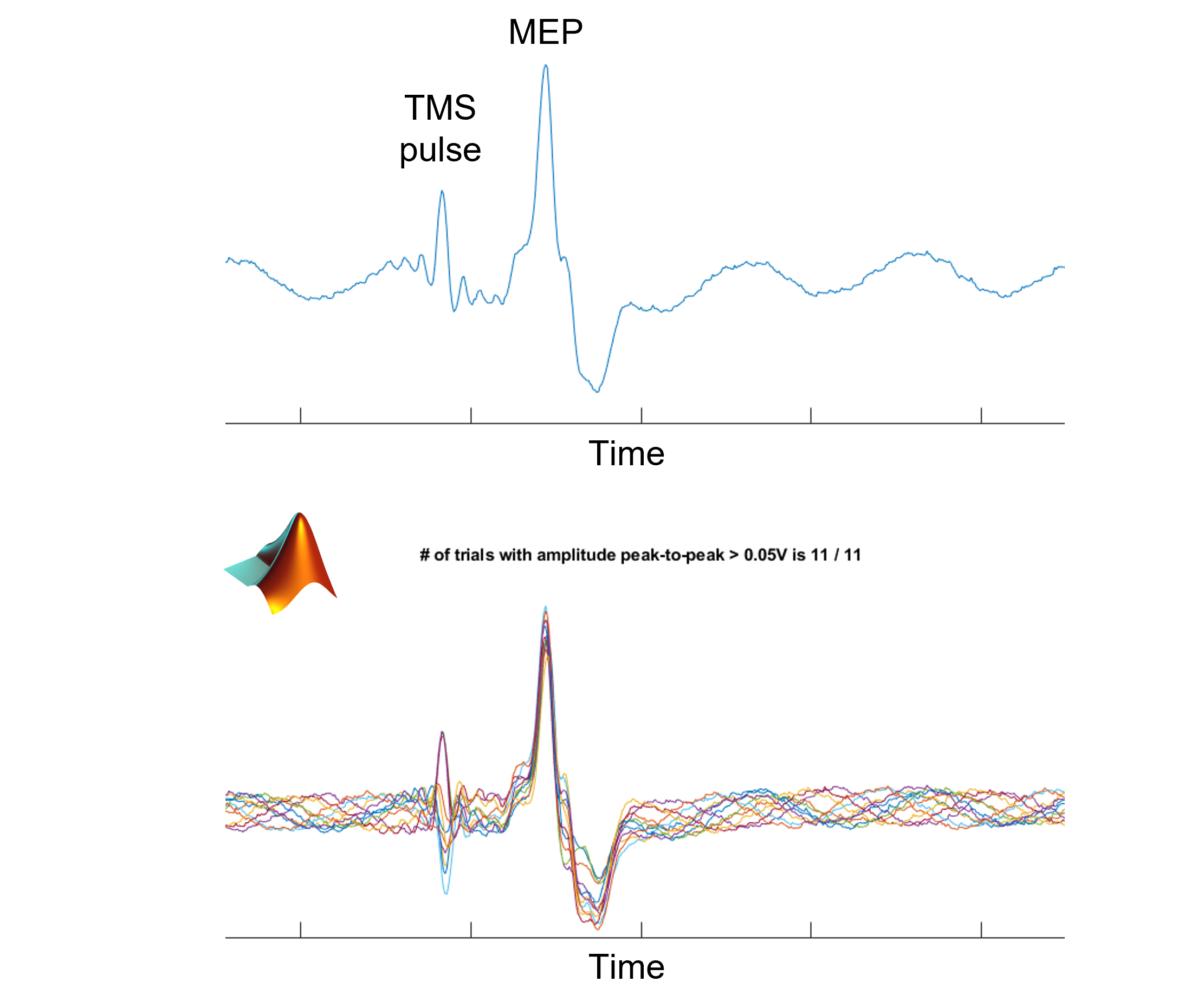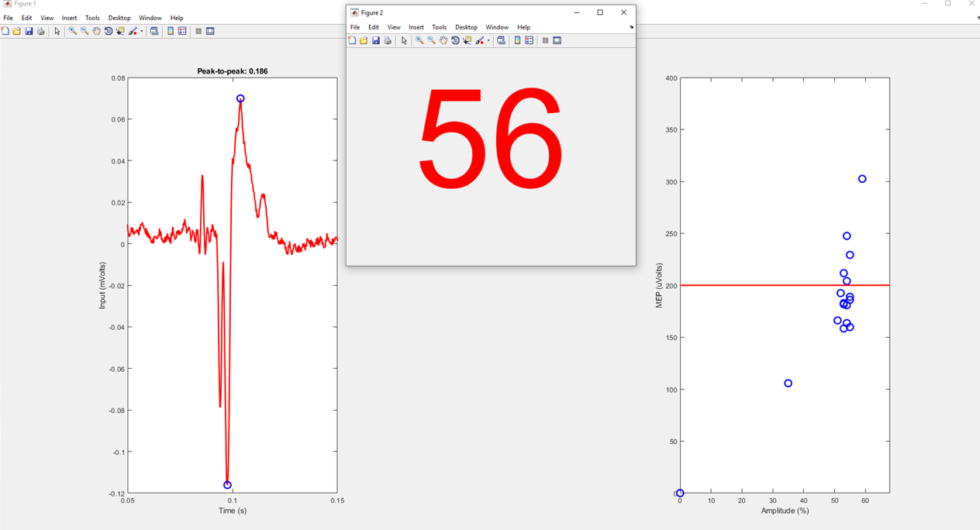Automatic motor threshold estimation🔗
This page describes the necessary setup, software and steps to automatically and rapidly estimate the motor threshold resting of any individual at the NMOD facility at Campus Biotech.
Setup🔗
Connect the TMS ( Magstim Super Rapid² Plus¹ / Magstim BiStim²) to the NMOD desktop computer using the vendor serial cable.
Turn on the EMG desktop WIFI Noraxon receiver and start MR3 software to control the Neuraxon.
In MR3, go to Hardware Setup, and in General check that there is a delay of 156/96ms, then activate one DTS sensor corresponding to your EMG device (serial number on it).
Turn on the CED Power3 1401 and connect the relevant EMG to the first digital port “0”.
Connect the TMS Trigger Out coaxial output to the “Trigger” port of the CED Power3 1401.
Software🔗
Start Matlab 2017b on the NMOD facility desktop computer.
Run the code MTAT_fcbg_rest.m, a modified version of the program written by Prof. Dr. F. Awiszus (Email Friedemann) compatible with the hardware available inside the NMOD facility.
The Matlab program MTAT_fcbg_rest.m connects to the TMS and iteratively:
adjusts the TMS amplitude to minimize the uncertainty on the RMT wait for the TMS air trigger pedal to deliver the TMS pulse
records the EMG and accepts / repeats the measurement based on the EMG baseline level before the TMS pulse analyzes the EMG data and calculates the 95% confidence interval on the RMT
Exits the loop if RMT is certain.
Note
This process converges rapidly towards the RMT (~40 sec). If necessary, the default threshold(200 uV) can be easily modified in the code MTAT_fcbg_rest.m Do not start Signal in order to avoid CED control issues between Matlab and Signal.

Example of Matlab-based EMG data recording.🔗
Counting the number of positive MEP (ie above RMT) is extremely time consuming and requires user interaction to count and/or adjust the TMS amplitude.
By contrast, the MTAT_fcbg_rest.m program is fast and fully automatic. The experimenter only needs to press the TMS pedal every 3 seconds to send the adjusted TMS pulse.

On the left: last EMG acquired. In the middle: next TMS amplitude. One the right: Summary of all peak-to-peak MEP data vs. TMS amplitude🔗
Bibliography🔗
Christelle B. Ah Sen, Hunter J. Fassett, Jenin El-Sayes, Claudia V. Turco, Mahdiya M. Hameer, and Aimee J. Nelson. Active and resting motor threshold are efficiently obtained with adaptive threshold hunting. PLOS ONE, 12(10):e0186007, October 2017. doi:10.1371/journal.pone.0186007.
Friedemann Awiszus. Chapter 2 tms and threshold hunting. In W. Paulus, F. Tergau, M.A. Nitsche, J.G. Rothwell, U. Ziemann, and M. Hallett, editors, Transcranial Magnetic Stimulation and Transcranial Direct Current Stimulation, volume 56 of Supplements to Clinical Neurophysiology, pages 13–23. Elsevier, 2003. URL: https://www.sciencedirect.com/science/article/pii/S1567424X09702053, doi:https://doi.org/10.1016/S1567-424X(09)70205-3.
Harris R. Lieberman and Alex P. Pentland. Microcomputer-based estimation of psychophysical thresholds: the best pest. Behavior Research Methods & Instrumentation, 14(1):21–25, January 1982. doi:10.3758/bf03202110.
Alex Pentland. Maximum likelihood estimation: the best pest. Perception & Psychophysics, 28(4):377–379, July 1980. doi:10.3758/bf03204398.